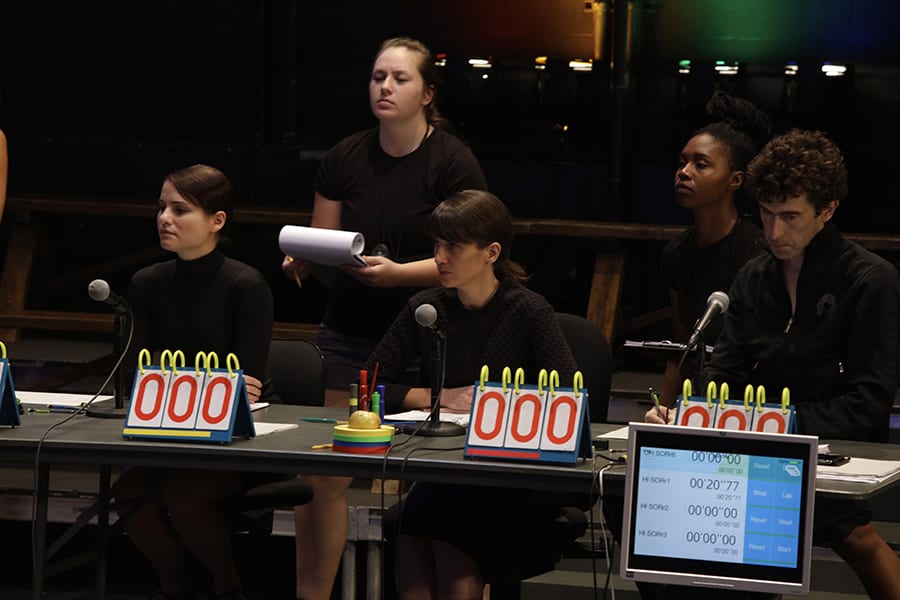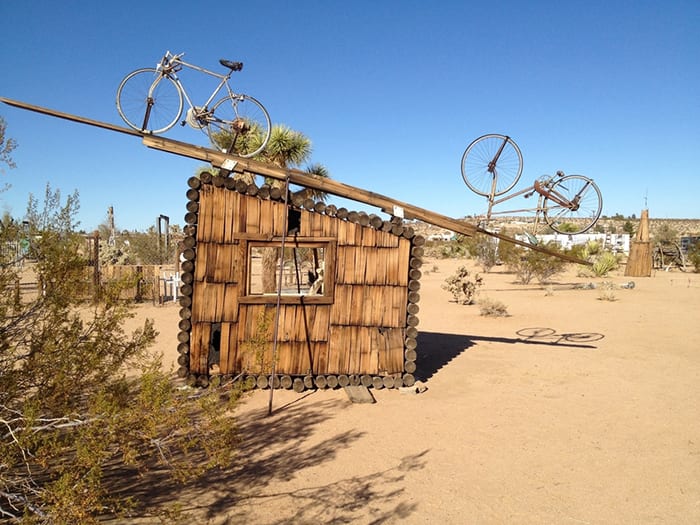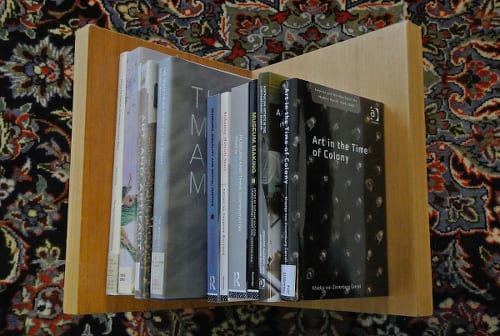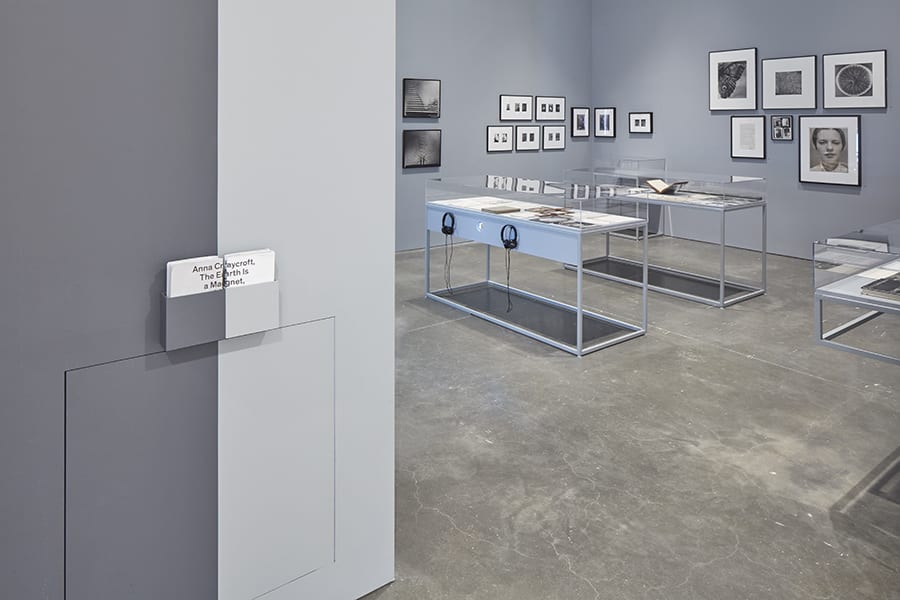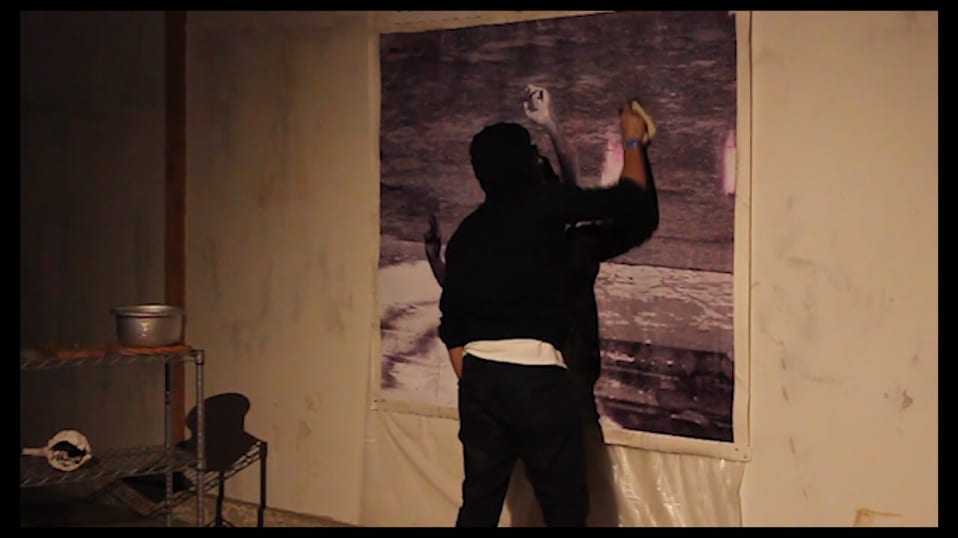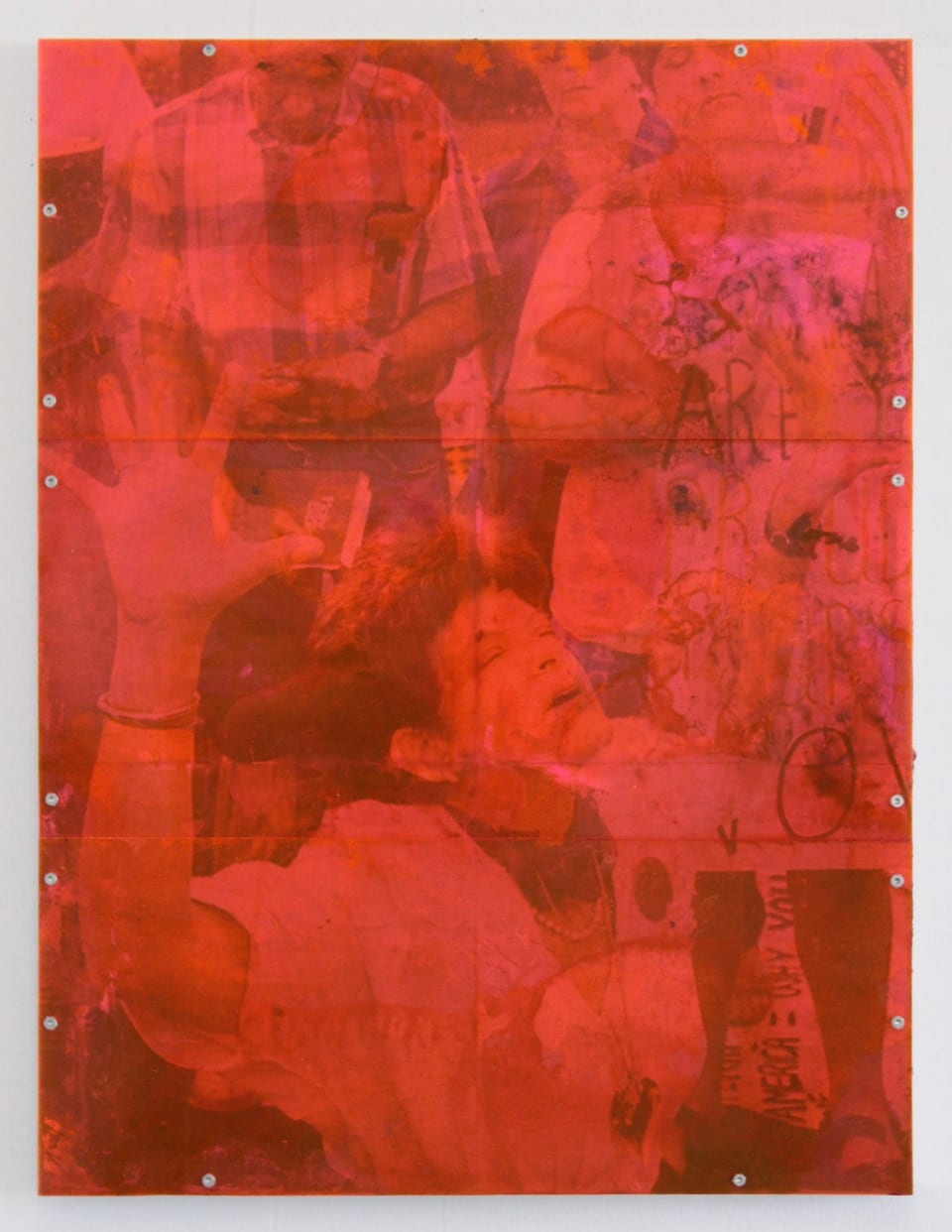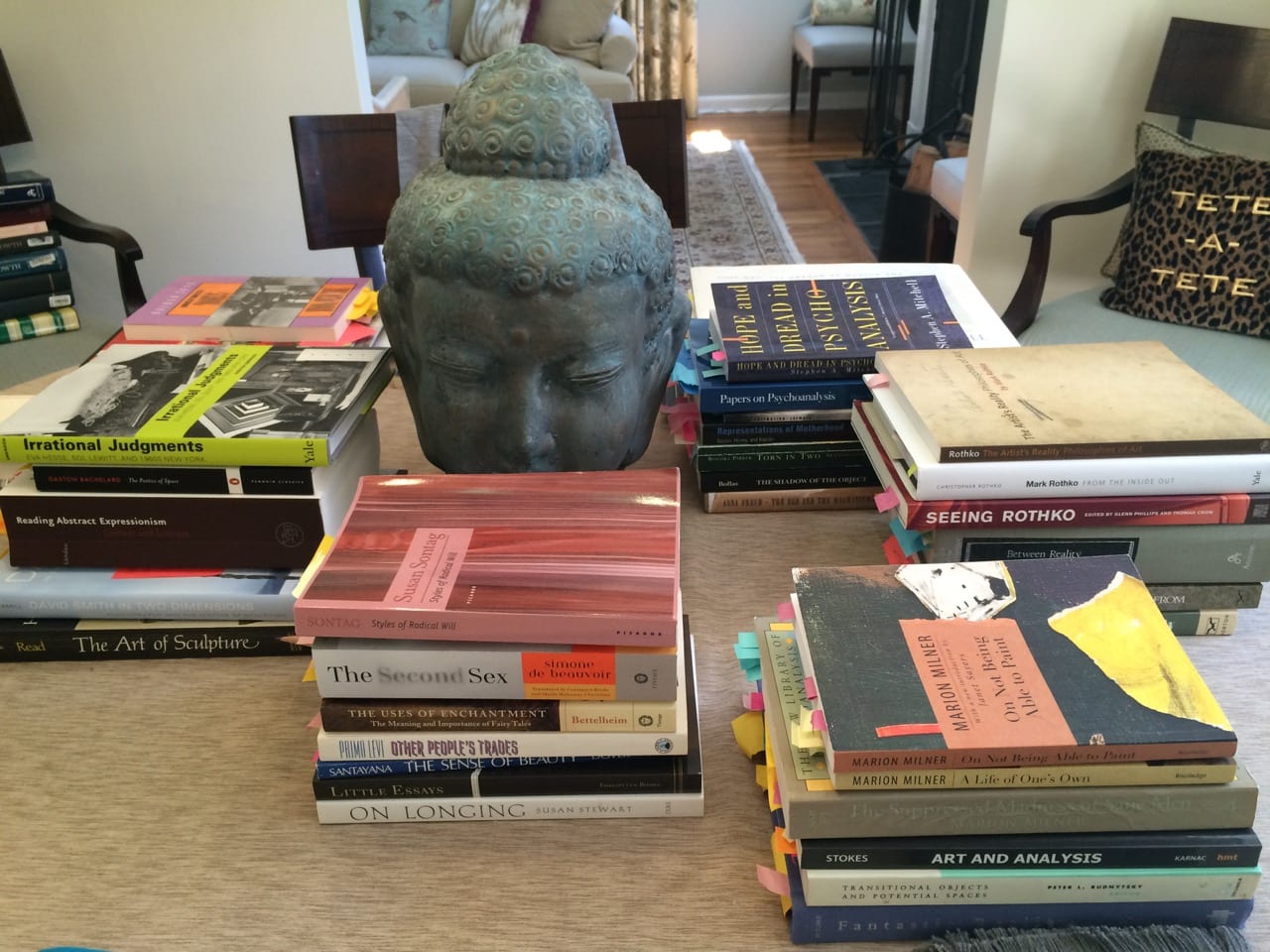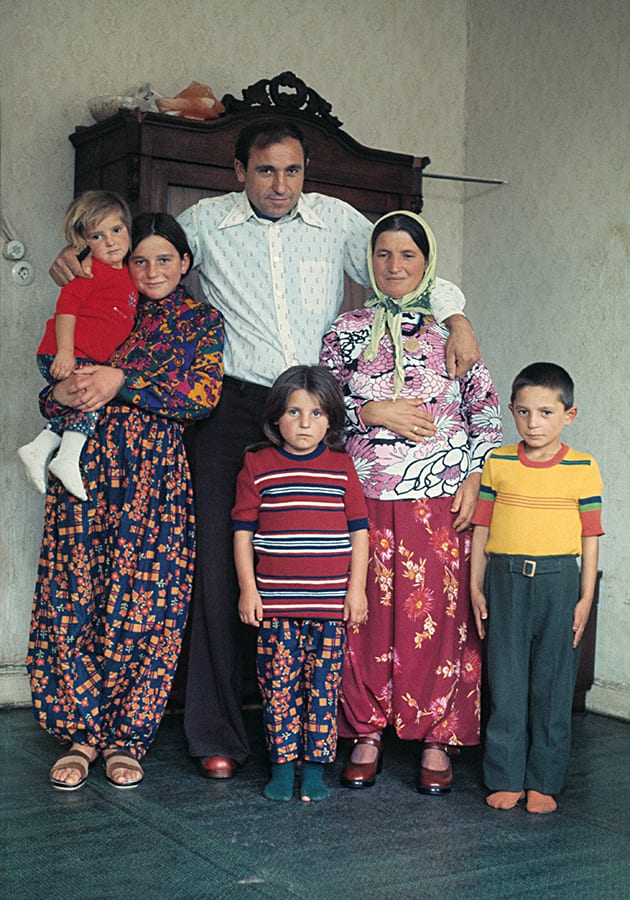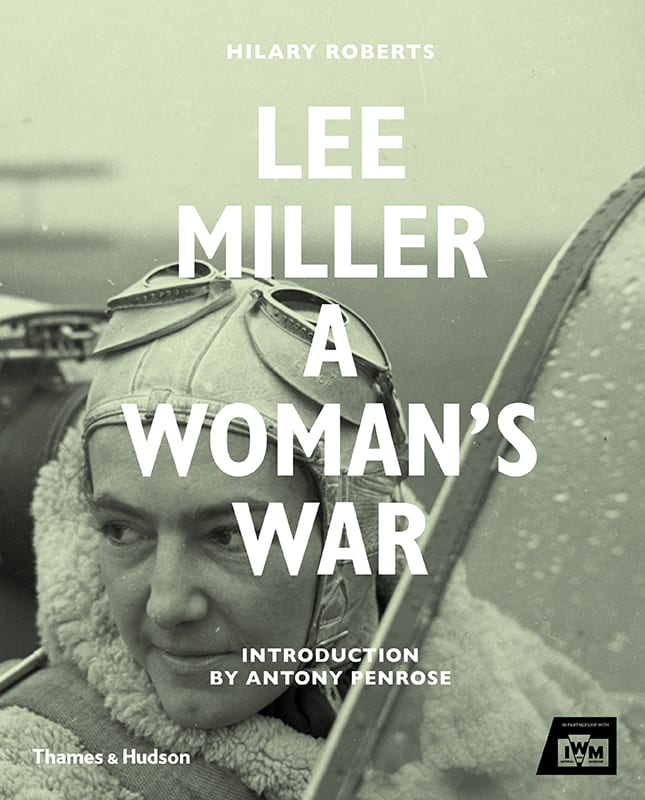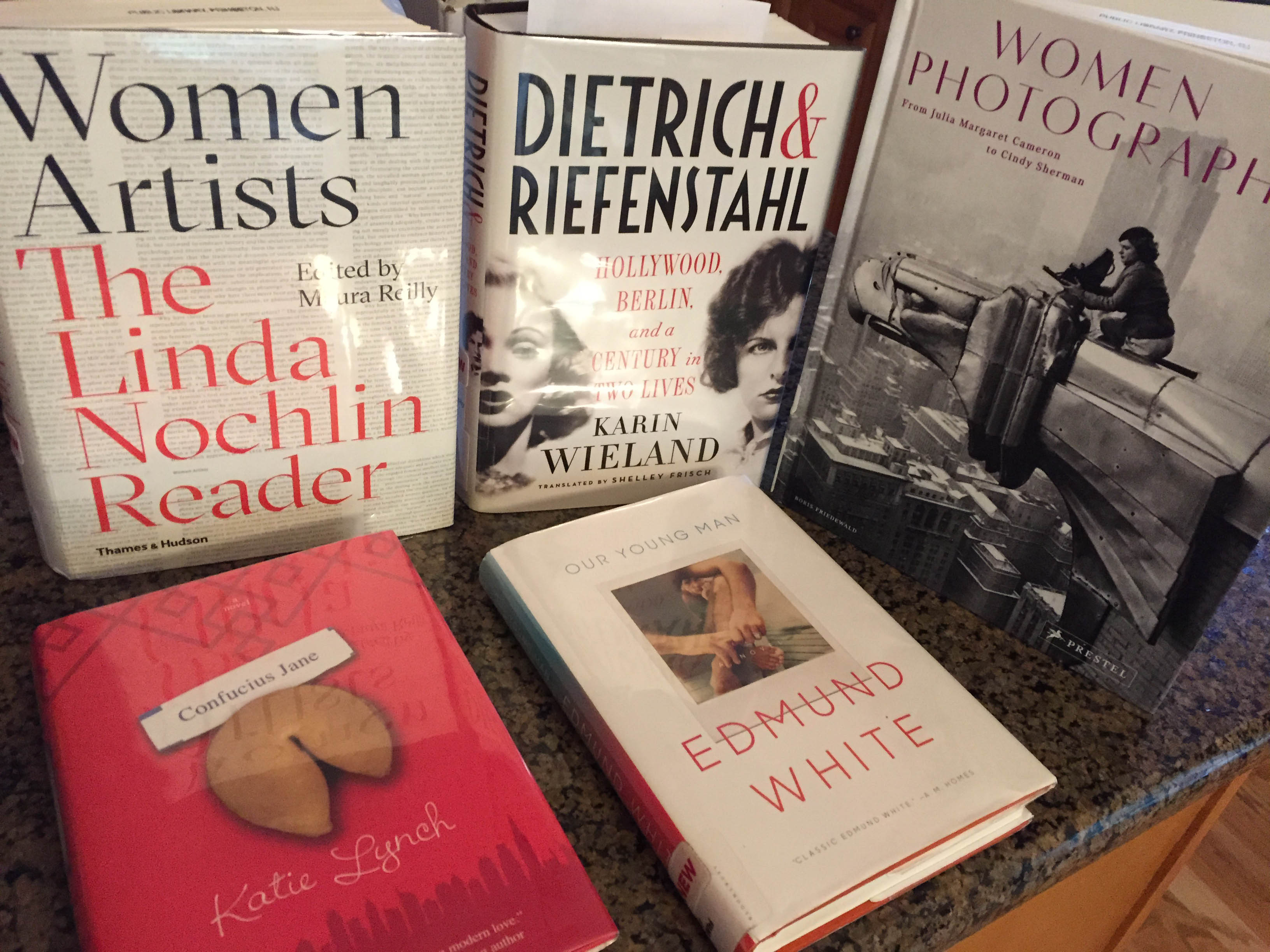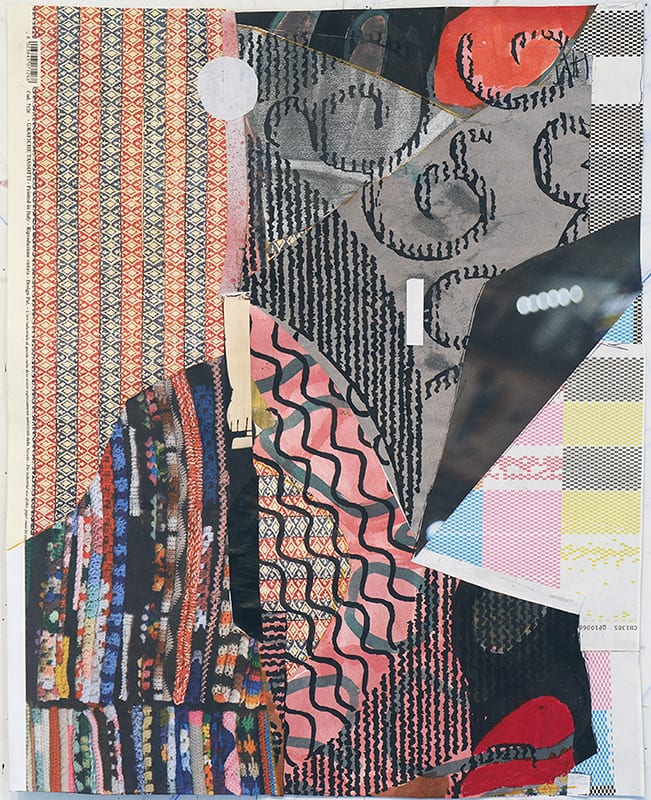By Mary L. Coyne
An introduction to Playing by the Rules, a new conversation series by curator and writer Mary L. Coyne
Update from Voices in Contemporary Art
An update from Voices in Contemporary Art (VoCA) on the most recent issue of VoCA Journal
Bookshelf: Alexandra Nitschke
By Alexandra Nitschke
Alexandra Nitschke shares what she’s reading with Art Journal Open
To Record, to Interpret, to Comment
By Anna Craycroft
In “To Record, to Interpret, to Comment,” Brookyn–based artist Anna Craycroft asks readers to reconsider how we come to know what we think we know about the history of modernist photography and the photographer Berenice Abbott, which draws from Craycroft’s extensive research into Abbott’s writings, photographs, letters, inventions, and other archival materials
Art Journal Open Presents “To Record, to Interpret, to Comment” by Anna Craycroft
By Gloria Sutton
Art Journal Open presents “To Record, to Interpret, to Comment” by Anna Craycroft
Edges of Action
By Nick Herman
In Edges of Action (2016), Los Angeles–based artist Nick Herman finds a distinctive method of framing his practice, blending the studied delivery of a public artist’s talk with the conversational pace of an intimate studio visit. This is the first installment of a unique three-part artist’s project Herman has created for Art Journal Open.
Art Journal Open Presents Edges of Action by Nick Herman
By Gloria Sutton
Art Journal Open is pleased to present Edges of Action by artist Nick Herman.
Bookshelf: Lynn M. Somers
By Lynn M. Somers
Lynn M. Somers shares her reading list in this new installment of Art Journal Open’s Bookshelf.
Candida Höfer’s Türken in Deutschland as “Counter-publicity”
By Amy A. DaPonte
Millions of Turkish immigrants settled in Germany after World War II to answer the call of politicians who needed to refresh the labor force after the war. Images of Turks at work or leisure in the parks, homes, markets, shops, and bars of 1970s West German cities populate Candida Höfer’s large, multiformat series entitled Türken in Deutschland (Turks in Germany, 1972–79).
Lee Miller, Challenging Convention
By Lauren Richman
Lauren Richman reviews Hilary Roberts, ed., Lee Miller: A Woman’s War, and the exhibition Lee Miller: A Woman’s War, and Walter Moser and Klaus Albrecht Schröder, eds., Lee Miller, and the exhibition Lee Miller, aka Lee Miller—Photographs and The Indestructible Lee Miller
Bookshelf: Elise Dodeles
By Elise Dodeles
In this new installment of Art Journal Open’s Bookshelf, Elise Dodeles shares what she’s reading.
Art Practice beyond the Home Studio: Roberto Visani and Caitlin Masley-Charlet in Conversation
By Caitlin Masley-Charlet
Caitlin Masley-Charlet, deputy director of Guttenberg Arts in Guttenberg, New Jersey, and artist Roberto Visani discuss his experiences while artist-in-residence at Guttenberg Arts and other residencies.

